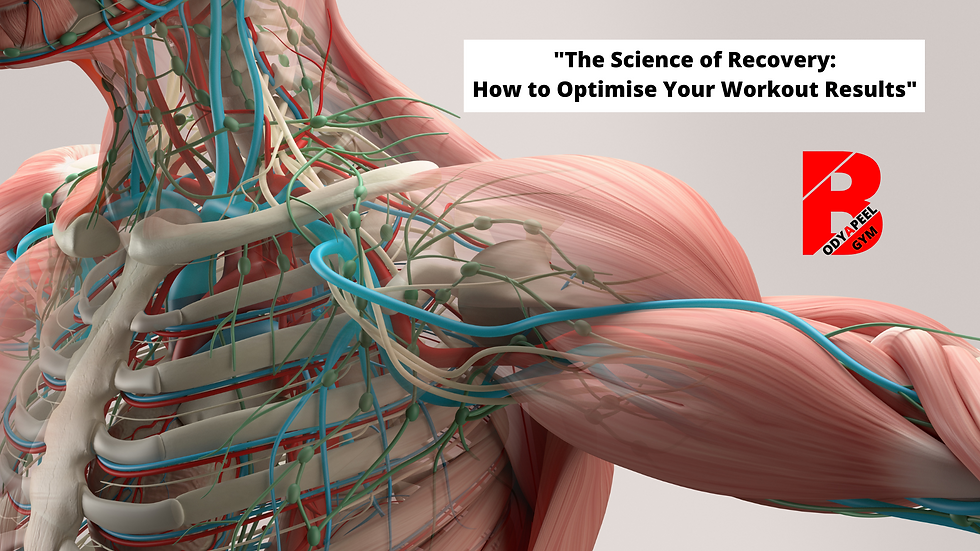The Science of Recovery: How to Optimise Your Workout Results
- Bodyapeel Gym

- Jan 16, 2023
- 3 min read

Table of Contents:
Introduction
The Importance of Recovery
Types of Recovery
Factors that Affect Recovery
Recovery Techniques
Sample Recovery Plan
Summary
Introduction
Recovery is an essential component of any workout routine, as it allows the body to repair and adapt to the stress of exercise. Proper recovery can lead to improved performance, reduced risk of injury, and optimised results. This guide is designed to provide information on the science of recovery, including the importance of recovery, types of recovery, factors that affect recovery, and recovery techniques.
The Importance of Recovery
Recovery is essential for the body to repair and adapt to the stress of exercise, which leads to improved performance, reduced risk of injury, and optimised results. Without proper recovery, the body can become overworked, leading to fatigue, injury, and decreased performance.
Types of Recovery
There are several types of recovery, including:
Physical recovery: Physical recovery refers to the process of repairing and rebuilding muscle tissue after exercise.
Mental recovery: Mental recovery refers to the process of allowing the mind to relax and recover after intense physical activity.
Emotional recovery: Emotional recovery refers to the process of dealing with and recovering from the emotional stress of exercise.
Factors that Affect Recovery
Several factors can affect recovery, including:
Intensity and duration of exercise: The harder and longer you exercise, the more recovery time the body needs.
Age and fitness level: As we age, our bodies take longer to recover from exercise.
Sleep: Sleep is essential for recovery, as it allows the body to repair and rebuild muscle tissue.
Nutrition: Proper nutrition is essential for recovery, as it provides the body with the nutrients it needs to repair and rebuild muscle tissue.
Recovery Techniques
There are several recovery techniques that can help to speed up the recovery process and optimise results, including:
Stretching: Stretching can help to increase blood flow and oxygen to the muscles, which can help to speed up recovery.
Foam rolling: Foam rolling can help to release muscle tension and improve flexibility, which can help to speed up recovery.
Ice and heat therapy: Ice and heat therapy can help to reduce inflammation and pain, which can help to speed up recovery.
Massage: Massage can help to increase blood flow and oxygen to the muscles, which can help to speed up recovery.
Sleep: Getting enough sleep is essential for recovery, as it allows the body to repair and rebuild muscle tissue.
Proper nutrition: Eating a balanced diet that provides the body with the necessary nutrients is essential for recovery.
Sample Recovery Plan
Here is a sample recovery plan that can be used after a workout:
Immediately after workout: Stretch and foam roll the muscles that were worked during the workout.
30 minutes after workout: Consume a snack or meal that contains carbohydrates and protein to replenish energy stores and aid in muscle repair.
1 hour after workout: Take a cold shower or use a cold pack to reduce inflammation and pain.
Before bed: Do some light stretching and/or yoga to relax the mind and body before going to sleep.
Summary
Recovery is an essential component of any workout routine, as it allows the body to repair and adapt to the stress of exercise. Proper recovery can lead to improved performance, reduced risk of injury, and optimised results. By understanding the importance of recovery, the types of recovery, factors that affect recovery, and recovery techniques, you can create a recovery plan that meets your individual needs and goals. Remember to stretch, foam roll, use ice and heat therapy, massage, sleep and eat well to achieve your recovery goals.




Comments